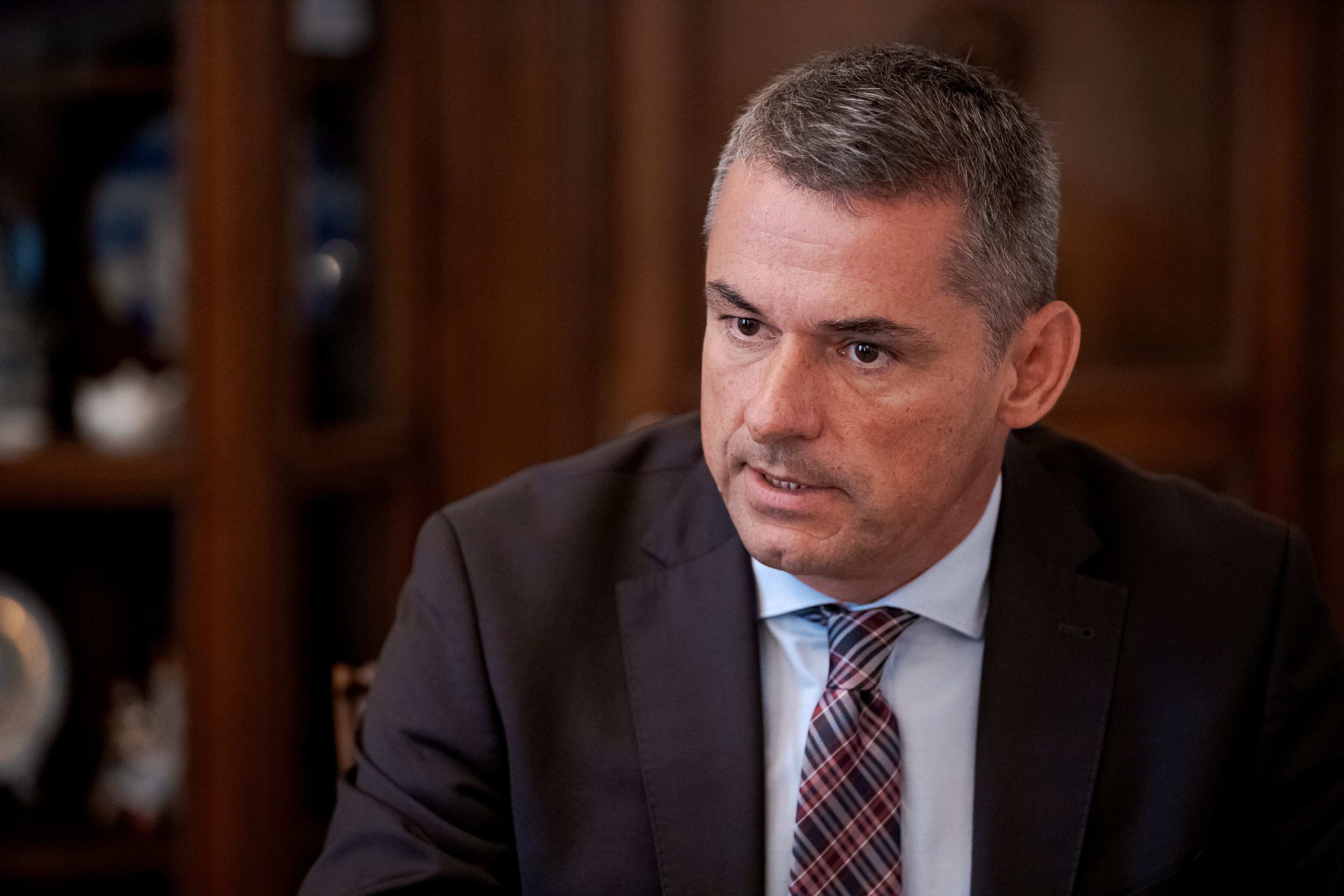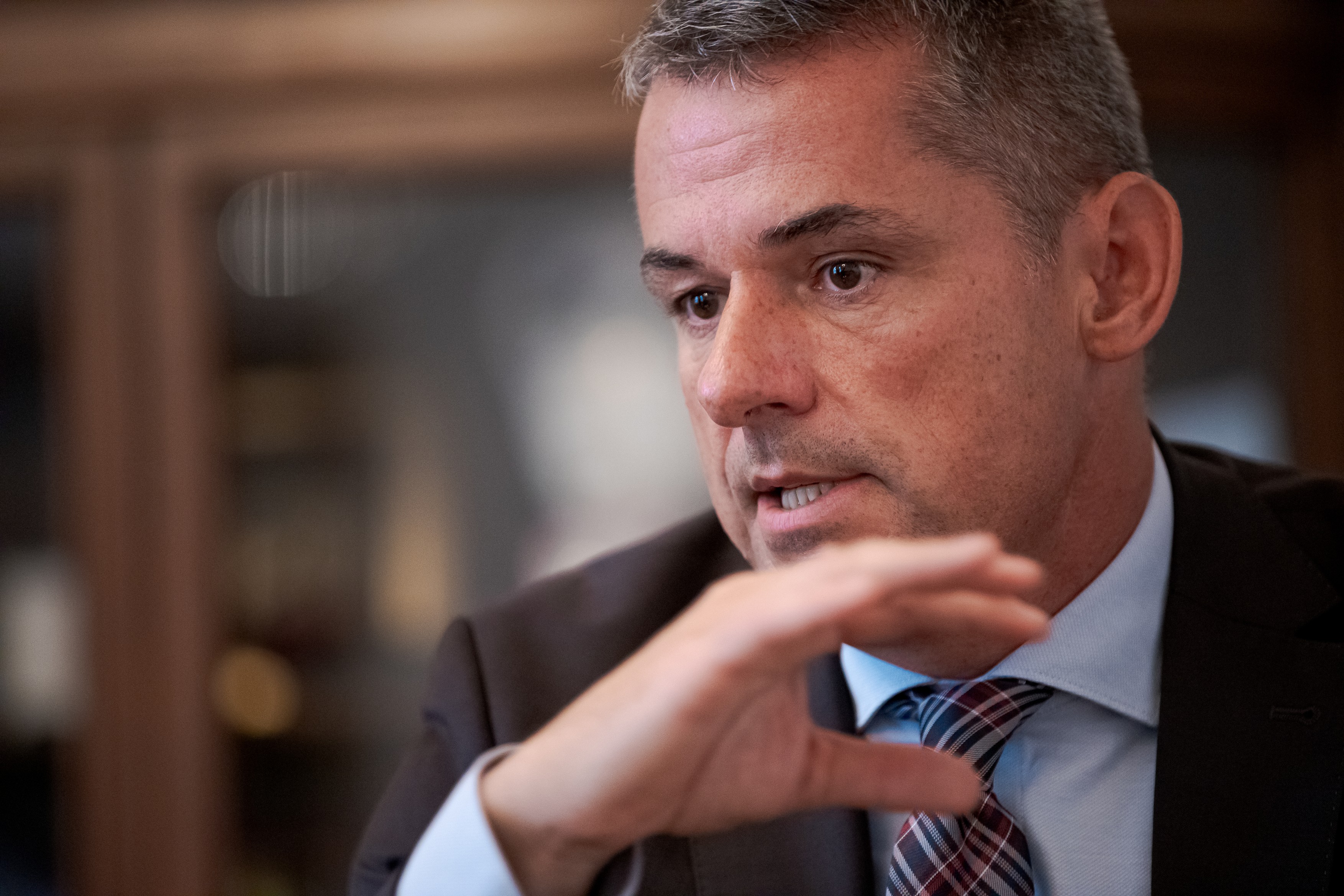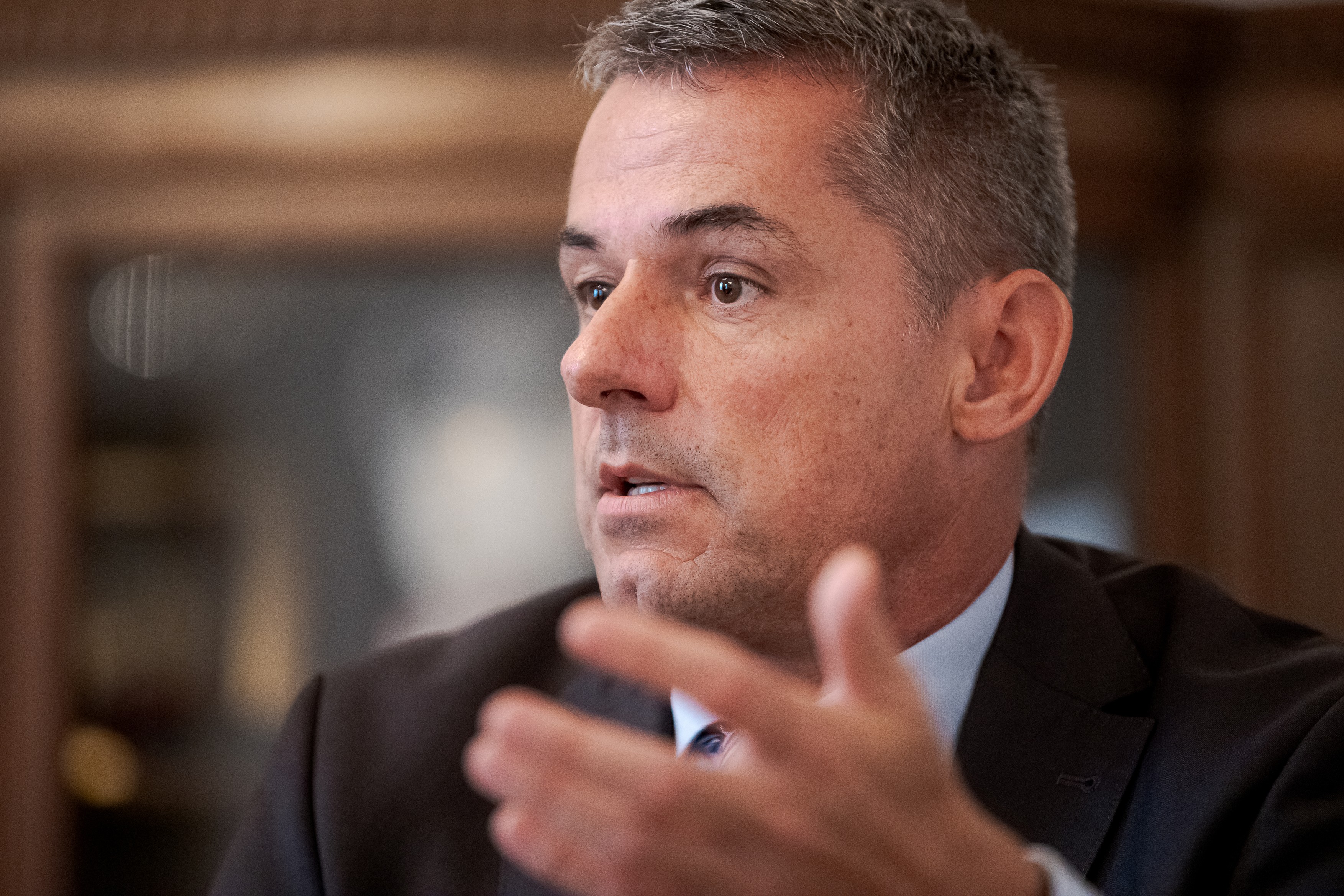With the increase in average temperatures and extreme weather events, the question of what we will eat in the future often arises. For urban dwellers, it’s natural to just go to the store to get groceries; at most they are perhaps surprised that everything is getting more expensive, but for example, Hungarian-grown potatoes are no longer available. In this interview series, several researchers have stated that it is unlikely that we will have the kind of easy access to our usual foodstuffs in a few decades as we do now. What are the effects of the complex atmospheric and meteorological processes known as climate change on agriculture and food production?
I, for one, wouldn’t share in excessive pessimism. Certainly, there’s virtually no question within science that climate change is real. However, it’s also a fact that climate is not constant; the planet has constantly been either cooling down or warming up throughout its history. What’s new is that anthropogenic influences are intensifying and accelerating this process to the extent that significant changes can be observed even within a single generation’s time.
Ever since we are recording temperatures, the nine warmest years have occurred in the past 23 years, not only in Hungary, but worldwide, too
These facts should encourage us to both adapt to the changing situation and try to have an impact on the climate. Since it’s not only that climate affects agriculture, but the reverse is true, too: agriculture also has a significant impact on the climate. For example, the way we use soils plays a role in carbon dioxide emissions.
And is that role a positive one?
No, unfortunately, it’s currently negative because improper soil use accelerates the decomposition of organic carbon in the soil. When this organic carbon breaks down, it turns into carbon dioxide, which in turn enters the atmosphere.

Are we using the soil incorrectly?
Very much so. The significance of this problem cannot be emphasized enough. If we are interested in the present and future of food production, we need to start by examining the soil. Everything begins with the soil: the cultivation of crops, and thereby the feeding of livestock, the production of food and the impact on the climate. If soil cultivation is too intensive and is paired with the excessive use of chemicals and fertilizers, it can indeed increase yields for a while, but it eventually becomes unsustainable. The same thing happens as in other areas of the economy: it is possible to constantly increase production and, along with it, emissions, but at some point, the resources, the nutrient capital, the organic matter we keep using, run out, and this can lead to the collapse of the ecological system. The excessive use of fertilizers to maximize crop yields can, in the long run, harm the soil’s ecosystem and organic matter content. The soil is a living organism, but if it becomes dysfunctional, we eventually achieve the opposite of what we intended: our yields will get less and less.
And when is this all happening?
Right now, right before our eyes.
We should take notice of the signs and take action. The soil is the area where there is still ample opportunity for a transition that can serve adaptation. In the soil, we could preserve the nutrient capital.
It is often heard that our soils’ biggest current problem is the insufficient supply of water, leading to drying out.
That’s not entirely accurate. The average precipitation in Hungary has been around 550 millimetres annually over the years. It has decreased by approximately 10 per cent, which, on its own, could still be manageable. The issue lies more in the distribution of precipitation than in its quantity. There are sudden instances of heavy rainfall followed by long-lasting drought, which can be challenging for agriculture to cope with.
So this is the reason behind soil drying and desertification.
No. Primarily, the soil isn’t drying out because there’s too little or too unevenly distributed water, but rather because the soil can hold less and less moisture. The soil can store large quantities of water only if it contains the aggregates and structural elements known as clay-humus complexes, which can retain moisture. This could be achieved with proper cultivation practices.
So, our current manner of soil cultivation…
Is wasteful of moisture. In Hungary, half of the precipitation reaching the soil is unusable for plants. Retaining it would be possible, but improper soil use leads to it ending up wasted. Precipitation doesn’t decrease in proportion to temperature increase, but rising temperatures increase evaporation, leading to more moisture escaping into the atmosphere. What we should do is to preserve moisture, but this can only be achieved by trying to create conditions in the soil that keep much more water in place.
When imagining the amount of water evaporating needlessly from the soil each year, picture roughly three times the entire volume of Lake Balaton.

I assume last year was particularly shocking for the agricultural sector.
Still not shocking enough, I’m afraid. Nonetheless, everyone was confronted with the fact that with the technologies, practices and plant species that have been in use for the past 30-40 years, it’s no longer possible to produce food of adequate quality and quantity. We need to change our way of thinking. Rising temperatures are shifting the boundaries of climate zones, with every one-degree Celsius increase in average temperature moving them by about 300 kilometres. Today’s climate in Hungary is equivalent to that of Bulgaria in the 1950s, meaning that climate zones have shifted significantly over two to three generations. We either adapt to the changing conditions, which means cultivating different plant species, using different technologies, and implementing different soil management practices, or we will inevitably face the consequences, and a sudden drought catching us unprepared could prove to be fatal.
What do you mean by fatal?
There won’t be any food to eat.
Look, just a few years ago, it was unthinkable that Hungary would need to import corn, but last year even this moment arrived. The total crop yield didn’t even reach 3 million tons nationwide, even though yields around 4 million tons were considered record lows in the past. There were tremendous losses, and the region of the Great Plain (Alföld) was practically devastated. Last year’s summer was a very serious warning, and, in my opinion, the last warning. However, despite a year having passed, looking at prevalent farming practices it seems that we still haven’t learned from the events.
By farmers, do you mean smallholders, the large-scale system or actually everyone in agriculture?
Everyone, but I fundamentally also include those smaller players who are often lacking in terms of knowledge, innovativeness and adaptability. Many believe the solution to come from government subsidies and rely on the current government, but perceive no personal task or responsibility regarding the situation.
Perhaps they don’t have the kind of advisors the owners of large estates can count on. Which are the exact cultivation methods that need to be abandoned?
The fundamental issue with soil cultivation in Hungary is that it’s done at constant depth. Farmers often work the soil at a depth of 15-20 centimetres every year. This leads to the formation of a so-called “plough pan”, especially after disking and ploughing. In other words, a hard layer develops at the cultivation depth, compacting the soil, preventing moisture from penetrating all the way down to the roots. If this plough pan is at a depth of 20 centimetres, rainwater can only penetrate that far, leaving the soil below dry. This quickly leads to inland flooding issues, with excess water remaining on the surface and subsequently evaporating.

What’s the solution?
Today, the kind of precision technologies can be applied in agriculture that allow for working the soil even at varying depths within a single field, adapting cultivation to the condition of the soil. This enables the prevention of the formation of compacted layers, and, if they already exist, they can be eliminated by penetrating below the compacted layer to ensure unhindered water movement in the pores between the topsoil and subsoil, allowing moisture to penetrate deeper layers. A soil without compacted layers can store up to 300 millimetres of precipitation. If our soil was of excellent quality, it could even store six months’ worth of precipitation. However, if there are various issues in the soil, this capacity can decrease to 20-30 millimetres, meaning a tenth of the maximum amount, and the rest of the water is lost.
The most damaging practice in this regard is ploughing. Hungary is traditionally a ploughing country, we would plough every inch of soil possible. However, at this point I would argue that ploughing should be banned at the state level and subjected to severe sanctions to avoid these harmful effects.
I understand that these are harsh statements, but I stand by them. Something needs to be done because in Hungary, we are destroying the soil in a traditional, organised and systemic manner.
For generations, we have considered ploughing – turning over the soil – essential for crop cultivation. I also plough my garden every autumn, about a spade’s depth. My grandparents in the Békés (county) countryside would do the same. They ploughed, sowed, and used to have bountiful harvests.
But you presumably don’t have such good yields anymore, and moreover, in your grandparents’ time, climate change wasn’t progressing at the pace it is today. What plants need is not ploughing, but good quality soil. And yes, when someone in Hungary takes to farming, they immediately think of turning the soil over with a plough, or in the case of a small garden, a spade. This is indeed a tradition that goes back many decades, even centuries. However, plough use is responsible not only for the loss of moisture in the soil but also for breaking down organic matter, which, when released into the atmosphere, turns into carbon dioxide, contributing directly to climate change. Furthermore, the organic matter that the plough destroys could store not only moisture but also nutrients in a way that becomes usable for plants. Frequent ploughing under these drought-prone weather conditions will inevitably lead to desertification.
So we need to change our ways immediately.
We should have changed them long ago. When discussing adaption to climate change, it’s essential to understand that there is a limit to this adaptation. If temperatures continue to rise, and precipitation keeps decreasing, and at the same time we destroy the very medium that provides us with food, we will eventually reach a point where the processes become irreversible with no more technological solutions. An immediate change of strategy is needed to prevent this and avoid damages similar to those of last year.
Can the economic impact of last year’s drought be quantified in monetary terms?
The damage to the national economy can be estimated at one trillion forints in the Great Plain region alone.
The total value of agricultural production averages around 2,800 billion forints annually. More than one-third of this was lost.

And we can’t know when such a summer will strike again…
There’s a good chance it will happen again soon. Taking into account the past twenty years, it’s clear it could occur anytime: just looking at this year, the Mediterranean Sea has never been as warm as it is now, with an average temperature of 28.5 degrees Celsius. Temperature records are being broken across Europe. And in Hungary, it is mostly the negative effects that are being felt – this does not apply to every country.
So, there’s a widespread belief that the Carpathian Basin is a blessed place in the regard that due to its topographical and other features, we will not be as negatively affected by climate change. Is this false?
Hungary happens to be in that unfortunate zone that feels the disadvantages of climate change. There are areas in the world where the effects are temporarily more positive, such as Northern Europe, where the vegetation period expands, making conditions favourable for basic cereal crops. This is the case in some areas of Russia and Canada as well. However, when looking at the overall global impact, unfortunately, we can say that we are in big trouble.
As the global population grows, per capita arable land area decreases, and this process is alarmingly fast. Forty years ago, there was nearly half a hectare of arable land per capita in the world; today, it is only 0.16 hectares. This means that we now need to produce the same amount of food per capita on a third of the land that was available 30-40 years ago.
The impacts are very negative in Africa as well, which is particularly bad news because it’s precisely in those regions where the population increase is the most significant with a subsequently increasing need for food, that the negative effects of climate change are the most pronounced. The same applies to South American countries, even though South America is one of the world’s largest food-supplying regions due to the cultivation of soy and various cereals.
Which plants are most at risk?
Looking at the most important food and livestock feed ingredients, the cultivation of corn poses the greatest problem. In the coming decades, global and Hungarian corn yields could decrease by 60-70 per cent. Hungary is considered not only self-sufficient but capable of producing at least twice as much corn as it needs for domestic consumption, leaving a surplus for industrial and energy use as well as export. However, if we do not change our cultivation strategy, variety use, and water management, this trend will reverse.
When we discuss changing variety use, what kind of transformations are we talking about?
It involves the varieties created through breeding that can adapt to dry and extreme weather conditions. In fact, breeding has always had directions focused on how to produce hybrids that can adapt to drier climates.

I suspect this isn’t something done overnight.
Indeed it isn’t. Developing a new crop variety for field crops takes 8-10 years, which is a very long time. In this case it’s still a crucial question whether they will allow these varieties, produced using the most advanced biotechnological methods, to be used in commercial farming. I’m not talking about GMOs because they are prohibited in Hungary, but besides GMOs there are precision breeding methods that can accelerate the development of new varieties. These methods could be significant in combating drought.
By having access to the complete genetic map of our most important crops today, we can intervene within a species precisely at the genetic section responsible for achieving a particular effect. If we expect better water uptake and improved water utilization from a plant, we can pinpoint the specific gene responsible for this and intervene accordingly. This is referred to as precision breeding.
Previously, this was accomplished through spontaneous mutations and experiments, and could take place randomly over 30-40 years. Today, we use targeted mutation breeding, which is not reliant on random events. While this is technically not a GMO method, it had been classified as such by European legislation, up until the very latest period.
I assume this has its own limits as well. We won’t be able to breed variants that don’t need water, will we?
Such a thing does not and will not exist. But there can be, for example, variants that can absorb moisture from deeper soil layers during drier periods and use it more efficiently. This can work for wheat, maize, and globally, for rice as well; these are roughly the most important food and feed crops.
Regarding climate change, the appearance and increased activity of pests and pathogens are often mentioned. How does this affect agriculture?
Dramatically; alongside soil degradation and drought, this represents the next major challenge. With rising temperatures and shifts in climate zones, new pathogens are appearing, some of which we haven’t heard of before, and so we lack defence strategies against them. We already use an excessive amount of pesticides, and if we need to use more chemicals against new pathogens, it will become unsustainable in the long run; causing a decrease in biodiversity and significantly reducing crop quality. However, refraining from chemical usage will result in a reduction in crop yields.
So it’s either the frying pan or the fire?
That’s right. Therefore, one of breeding’s most important aspects is to make sure that plants can effectively resist pests, especially the various fungal diseases grains are most affected by, without the use of chemicals.
Going beyond animal feed crops, what about plants grown for direct human consumption, like potatoes or green peas? There’s a lot of talk about serious issues facing potato cultivation in Hungary.
Potatoes are our main source of starch, and it is indeed a problematic situation, as over the past ten years, the cultivated area has decreased to one-fifth of what it had been. The idea of importing expensive French and Polish potatoes in January would have been inconceivable a while back. We have become net importers from net exporters.

So, there is no political conspiracy behind the fact that I can’t get Hungarian potatoes at the store.
You can’t get them because there aren’t any. We have basically run out of cultivable areas for potatoes. This is closely related to climate change, as the reason why it has become economically challenging to grow potatoes is the shifting of climate zones; we were already on the edge of the potato cultivation region. As I mentioned, a one-degree Celsius increase in average temperature shifts the climate zones by 300 kilometres, which means that we have almost fallen out of the optimal zone for potato cultivation.
According to experts, climate change is not to be expected to reverse anytime soon; in fact, it is accelerating. Are we going to lose Hungarian potatoes?
In Hungary, the only way to cultivate potatoes economically is with irrigation. This limitation reduces our options because our irrigated land is decreasing, currently sitting at around 80,000 hectares. Producing more potatoes would require development of irrigation infrastructure. We have enough water, more than what we need for our currently irrigated land. And there is one circumstance that we can’t attribute to climate change: over the past few decades, we have fallen behind in state-supported and competitive potato breeding, despite having very good varieties. Hungary lacks storage capacity and processing facilities. The entire production chain needs to be rebuilt. If we tackle the challenges related to irrigation and breeding, Hungarian potato cultivation can be saved.
In many regards, we are on the northern border of fruit cultivation as well. For example, grapes are not really grown further up north. We may be the northernmost bastion of grape cultivation.
There are experiments in Germany and Poland, too, but we still prefer to consume domestic wines. Today it generally applies to fruit cultivation that you cannot utilise cutting-edge technological solutions without irrigation. Unfortunately, there are some fruit species that are on the way out partially due to changing climates. If we look at berry fruits such as raspberries, they are practically disappearing. The same goes for currants.
Indeed, we used to be a raspberry powerhouse. The raspberries from Somogy and Nógrád (counties) were legendary.
That’s a thing of the past now. Raspberries have become a rarity in Hungary, as these days it has become impossible to produce berries without shading facilities.
These are disappearing, while other fruits are emerging. Who would have thought ten years ago that there would be kiwi and fig plantations in Hungary on contiguous areas? Well, they are already present in Zala, Baranya (counties), and even the Great Plain.
This can also be attributed to shifting climate zones. When visiting Southern Europe, Southern Italy or Greece, we need to take a good look around with the perspective that we can expect similar climates at home. Our agriculture is heading in the direction of Southern Europe, or even North Africa. That’s why we use North Africa as a testing laboratory. We have very good connections there, thanks to which we can test plant varieties under conditions we need to prepare for in Hungary in the coming years.

Perhaps we will breed different types of animals as well?
This has already begun; it’s not by chance that cattle breeds from Australia and other southern regions are being imported – these have more robust drought tolerance and can thrive in drier conditions. In Hungary, these breeds are showing very promising results because they can adapt more competitively to the changing climate conditions.
It is also possible that 20-30 years from now, not only different types of cattle will be present, but something entirely different might come as a substitute?
Cattle as a species is certainly here to stay, as there are different breeds of cattle in tropical regions as well, and they are present in all climate zones worldwide. However, some intra-species transition between breeds is already underway, that’s for sure.
However, it seems that when it comes to vegetables and fruits, we need to bid a bitter farewell to certain varieties and get used to others. Apricots have been facing problems for years.
In some parts of the country, we might soon have to give up on apricots. It may still be possible to grow them in small garden conditions, but in the long term, as an orchard investment or for large-scale production, it will be less and less viable.
Climate change not only means an increase in temperature, but also the earlier onset of the growing season. For example, the circulation of sap in plants can start as early as February. However, due to this earlier start, even a slight late spring frost can damage the plants, causing the reproductive parts to die off, resulting in no yield. We can see April frosts occur almost regularly, with disastrous consequences. It happened last year, and unfortunately, this year, too.
I suppose there’s also an anthropological aspect to adapting to climate change. It’s primarily we who have to adapt, not nature, and this process starts within our minds. The fundamental question is whether we understand what we’re doing, whether we can let go of what no longer makes sense, and whether we can embrace new technologies. It’s great that there’s knowledge here at the university about what needs to be done. But what is needed for this knowledge to become part of the everyday lives of those involved in agriculture?
Ideally, readers of this article would slap their foreheads and go “From now on, I’ll focus on adaptation.” But on a serious note, the role of the press and publicity is undoubtedly crucial. However, the most important factor, alongside expanding the knowledge of agricultural stakeholders, is the advisory system. Information needs to reach the level of each and every farmer, and they need to understand: solutions exist, but you need to change as well. It’s very challenging to convince those who have been thinking in terms of old technologies for 30-40 years, for the reason “my grandfather did it this way.” Meanwhile, it is also those with a great deal of knowledge who can implement new methods in practice, so adapting to climate change requires familiarity with cutting-edge technologies.

And how is this going at the moment?
Not very well, only four per cent of those working in agriculture in Hungary have a higher education degree. However, I also perceive the role of universities to be crucial in that the new generations of agricultural engineers entering the workforce are well-versed in digital technologies and the world of information technology, which provides essential background support for finding solutions. The younger generation is much more flexible and willing to challenge stereotypes or dogmas that the older generations may struggle to let go of. This gives reasons for hope. The task is very exciting and extremely complex; academics, farmers, and the government all have their roles to play in it. Effective cooperation is needed to ensure that sustainability is not just a slogan but something concrete, meaning: it must be ensured that the ecological system does not collapse within a few years or decades, but remains functional. This is even more crucial given that preliminary forecasts suggest that the Earth’s population could increase to as much as 11 billion by 2100.
More in 24.hu’s doomsday interview special (in Hungarian):
- Last summer, András Gelencsér, an atmospheric scientist and the rector of the University of Pannonia, explained to our newspaper that we can no longer stop the environmental crisis, and our civilization will collapse within a few decades. You can read the interview here.
- Shortly thereafter, we published a response article protesting the professor’s claims, which was signed by ten Hungarian researchers, including Diána Ürge-Vorsatz, the Vice-Chair of the Intergovernmental Panel on Climate Change (IPCC).
Then, we conducted interviews with two more scientists strongly contesting Gelencsér’s claims. Human ecologist András Takács-Sánta explained that a step-by step positive change is achievable to save the planet; you can find his interview here. - Ecological economist Miklós Antal deemed Gelencsér’s main claims erroneous, harmful even. You can learn about his arguments in this article.
- Following these interviews, we provided András Gelencsér the opportunity to respond in detail to the criticisms.
- Next, we invited András Gelencsér, Diána Ürge-Vorsatz and Balázs Nagy geographer-researcher to our editorial office to discuss in person whether the planet can be saved. What came out of this? You can find out by watching our video of the conversation.
- Speaking of Balázs Nagy: the geographer previously gave us an interview discussing possible outcomes of climate change, predicting devastating floods and rising sea levels redrawing maps in the near future. You can review that interview here.
Following this, we conducted an interview with environmental psychologist Csilla Ágoston-Kostyál, discussing how to cope with the emotional burden of experiencing climate change. If you’re also interested in this topic, you can click here. - Physicist-businessman Zsolt Szalóczy raised the stakes even further, stating that climate change is an exponentially accelerating process that narrows the conditions for existence in such a way that within a few decades, at least half of humanity will likely perish. The key is to adapt to change and develop individual strategies for survival. If you’re willing to undergo shock therapy, click here for the interview.
- Evolutionary biologist Eörs Szathmáry believes that global collapse could occur by 2050 if we don’t start cooperating soon. He argues that within us is not only greed and competition, but also the capacity for cooperation. You can find this interview here.
- Professor of geography József Pálfy outlined the future based on lessons from Earth’s history, also suggesting solutions.
- Meteorologist László Molnár discussed how geo-engineering solutions can temporarily slow down the problem, but we’re better off preparing ourselves for life to change drastically in the near future.
And that’s how we ended up here. Stay tuned for more in the series! We will reach out to researchers who have suggestions on how to survive this crisis we have caused for ourselves.






